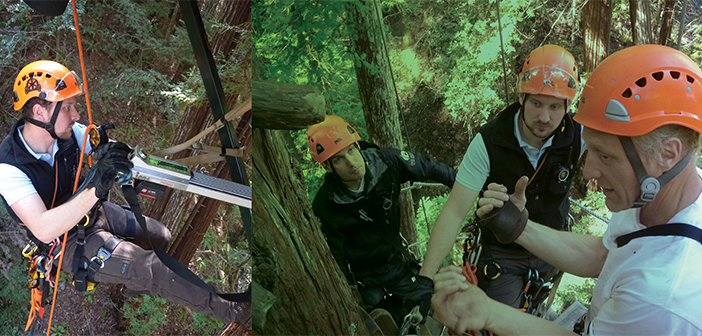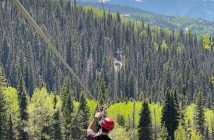If you are using trees to support structures, or if your facility is constructed in a forest, it’s likely you will benefit from the services of a qualified arborist. There’s a lot to know about tree biology and best management practices for trees and ecosystems when you are building a business in and upon trees.
It may sound trite, but trees take a long time to grow, and you cannot undo tree pruning or removal decisions. I have seen several instances where poor communications led to unfortunate outcomes. A lack of good tree preservation measures and tree-based planning can have the same result. It is much harder and more expensive to try and fix a problem after you have created one than it is to plan and avoid problems. And that’s where an arborist can be a big help.
WHAT IS AN ARBORIST?
Let’s start with Wikipedia for a complete and up-to-date definition:
“Arboriculture is the cultivation, management, and study of individual trees, shrubs, vines, and other perennial woody plants. It is both a practice and
a science.
“The science of arboriculture studies how these plants grow and respond to cultural practices and to their environment. The practice of arboriculture includes cultural techniques, such as selection, planting, training, fertilization, pest and pathogen control, pruning, shaping, and removal.
“A person who practices or studies arboriculture can be termed an ‘arborist’ or an ‘arboriculturist’. A ‘tree surgeon’ is more typically someone who is trained in the physical maintenance and manipulation of trees, and [is]therefore more a part of the arboriculture process rather than an arborist.
“Risk management, legal issues, and aesthetic considerations have come to play prominent roles in the practice of arboriculture. Businesses often … hire arboriculturists to complete tree hazard surveys and generally manage the trees on-site to fulfill occupational safety and health obligations.”
The only thing I would add is that, more and more commonly these days, “tree surgeons” are trained in arboriculture, thus many people climbing, pruning, and removing trees refer to themselves as “arborists.”
When choosing someone to help with your specific tree management issues, you should know a bit about the professional groups that arborists may be affiliated with.
The International Society of Arboriculture (ISA) has more than 20,000 members spread throughout 28 countries, including the U.S. and Canada. The 90-year-old association promotes the professional practice of arboriculture and fosters a greater worldwide awareness of the benefits of trees through research, technology, and education.
ISA administers several credentials. The most common is “certified arborist.” This credential requires three years’ experience, which can be in a related field such horticulture, landscape architecture, or forestry. A certified arborist may have a degree in the field of arboriculture, horticulture, landscape architecture, or forestry from a regionally accredited educational institute. There is a code of ethics that goes with this credential, and continuing education units (CEUs) are required to renew it every three years.
Less common, and requiring more knowledge and experience, is the “board certified master arborist” (BCMA) credential. Less than two percent of certified arborists are BCMAs. The BCMA covers a very broad curriculum. It is more likely that you will find a BCMA who is willing to provide information about tree management as a consulting service.
You may also encounter tree services that are members of the Tree Care Industry Association (TCIA). This industry group serves commercial arborists of all types, providing a wide variety of training in various specialties, including aerial rescue, treecare safety, plant health care, and tree climbing.
TCIA accreditation is a business growth program that gives tree care companies the tools to strengthen the foundation of their businesses. TCIA helps accredited companies build documented safety and training programs, establish policies to help employees perform better, evaluate their company against industry standards, and develop customer satisfaction practices.






